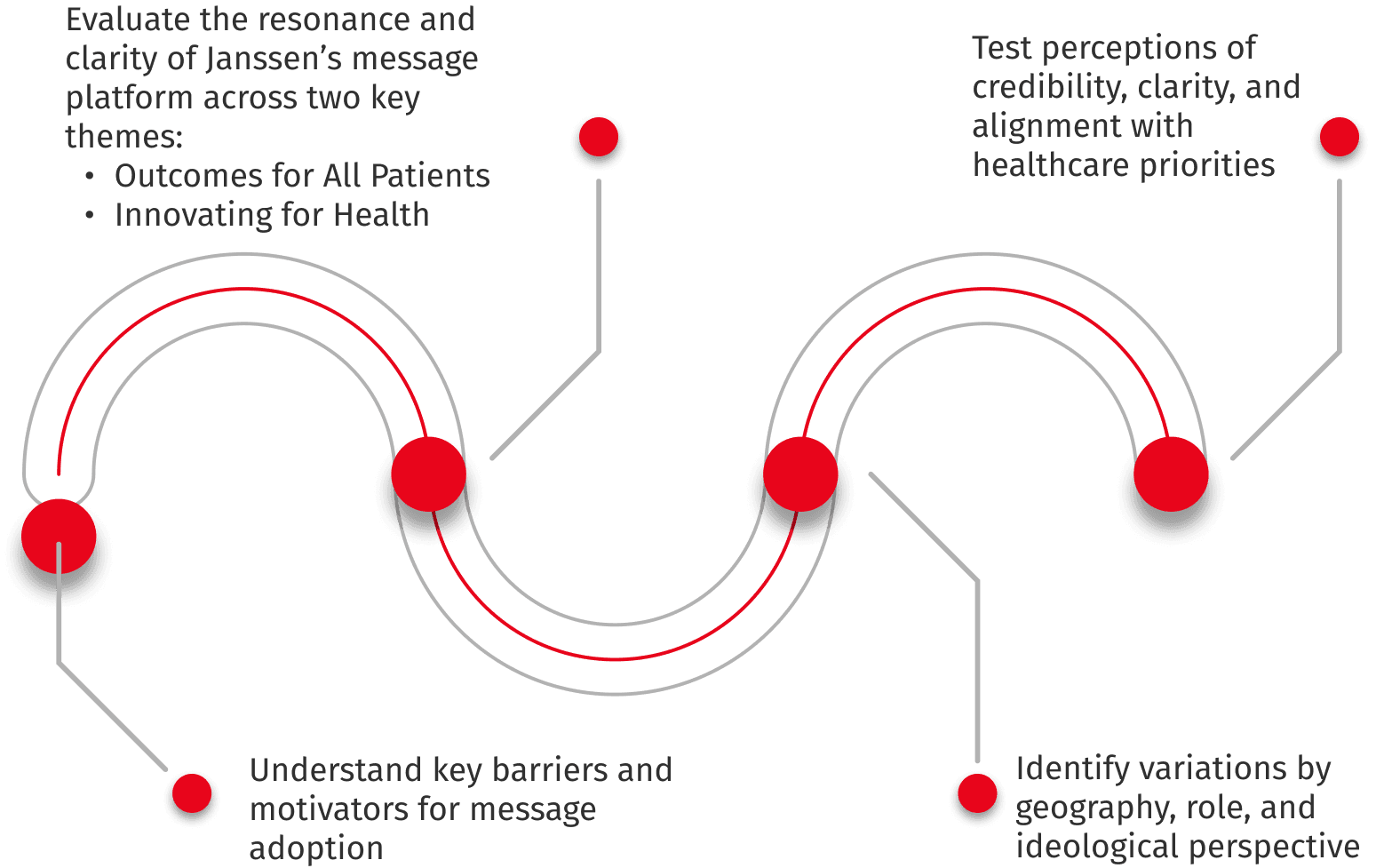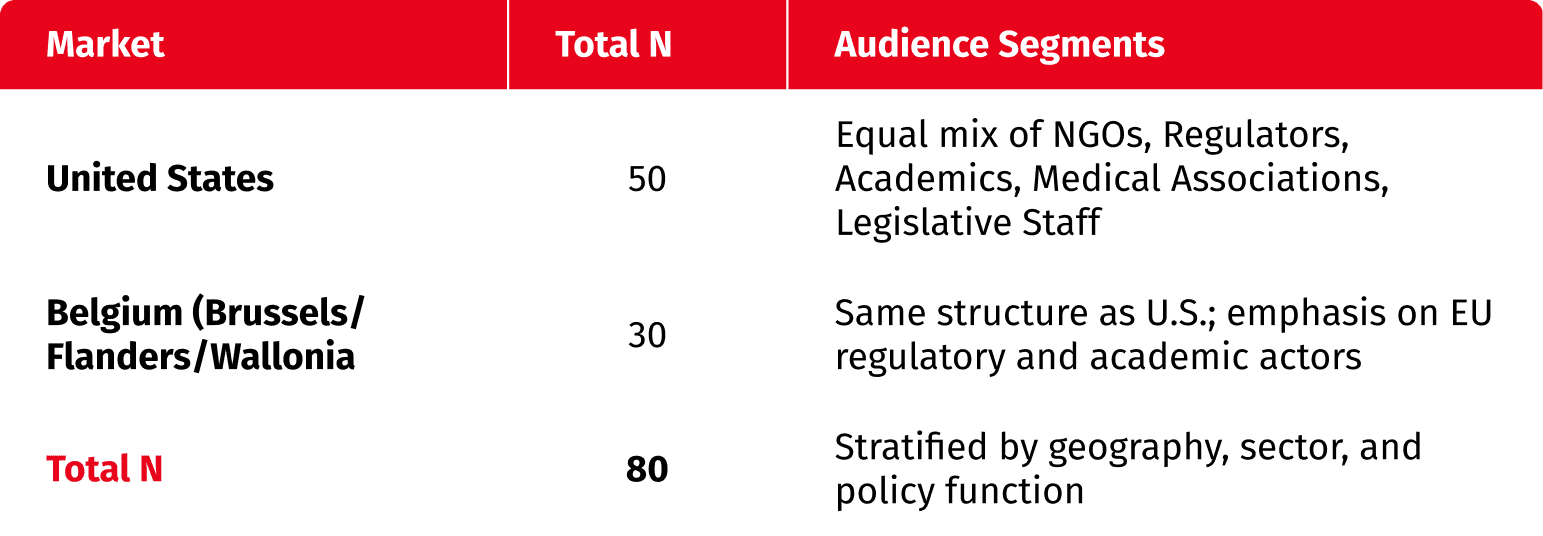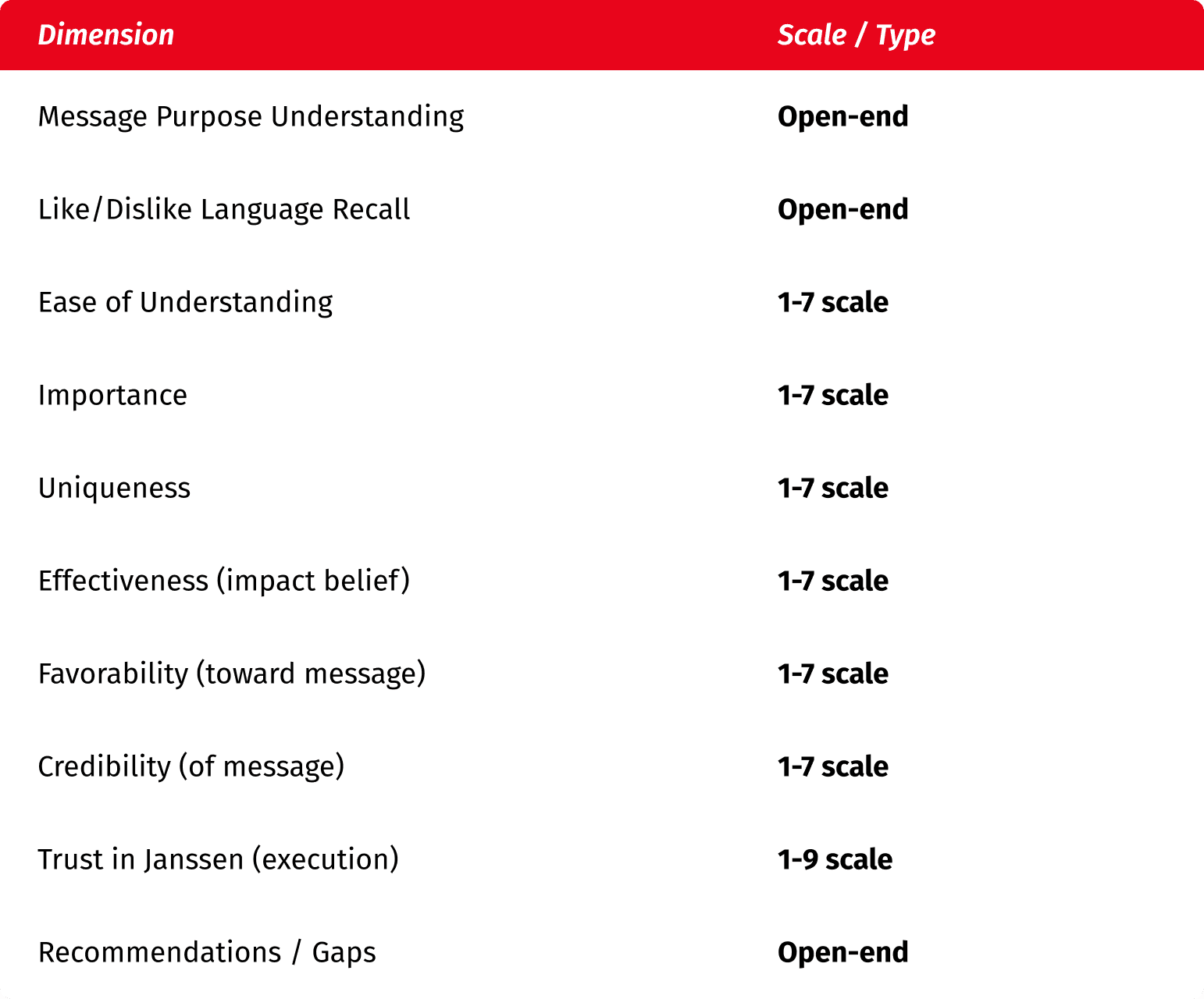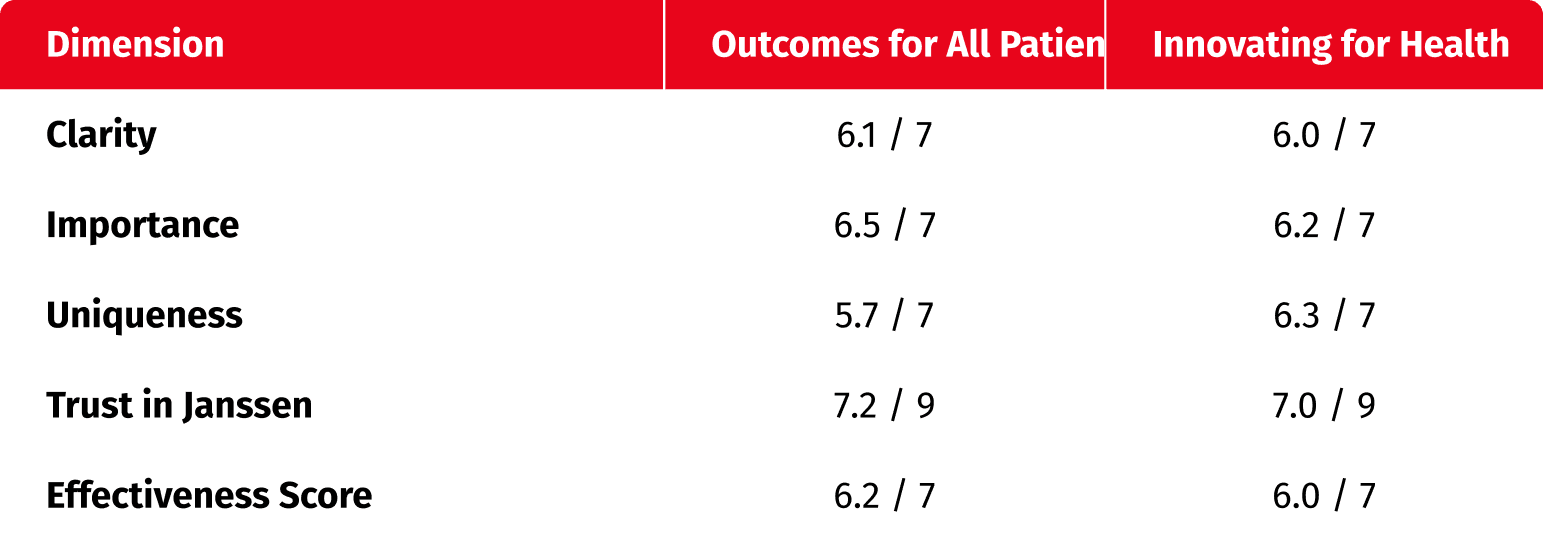
Healthcare
Health Policy Influencer Message Testing


In the evolving global health policy environment, a leading pharmaceutical firm aimed to validate the effectiveness of its corporate messaging strategy among key policy influencers. With increasing scrutiny on pharmaceutical players and growing demand for transparency and action on healthcare reform, the need to build a compelling, credible narrative became paramount.

This study leveraged a multi-method; messaging evaluation approach tailored for B2B and policy engagement:
Sample Framework
Qualification Criteria
Respondents had to meet the following:
Message Evaluation Metrics
Each message tested was rated on:

Comparative Highlights: